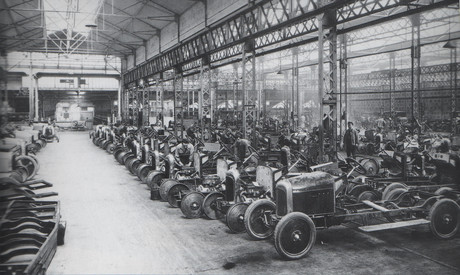How to avoid becoming a victim of digital Darwinism

I recently had the opportunity to speak at Siemens’s Digitalize 2017 in Sydney. One of the key emerging topics at this event was how technologies such as the Internet of Things (IoT), automation and artificial intelligence (AI) are becoming the foundation for how businesses operate as we move forward into Industry 4.0.
We also had some timely reminders of what can occur when companies don’t make the change to a digital enterprise efficiently and effectively. In many cases they are not able to survive, and become victims of what we could call ‘digital Darwinism’.
Beyond developments in technologies related to the IoT and automation, Siemens is witnessing the rapid adoption within process and hybrid process industries of technology and practices that are already well established within advanced discrete manufacturers and their supply chains, such as those in the automotive and aerospace industries. That is, practices whereby vertical and horizontal integration of every function and hierarchy is connected across the entire value chain of an enterprise through digital collaboration.
Such a digital collaboration chain unifies people, processes, workflows, manufacturing and production assets, automation, simulation-based digital twins and cloud-based applications, the value of which is to bring correctness and agility to decision-making, as well as flexible operations, efficiency, consistent quality, security and (ultimately) greater productivity to manufacturing or processing enterprises.
Gaining control of data and information is an essential part of the digital transformation process. Manufacturers, for example, can apply certain data to change the configuration of a product so it can be adapted within an existing system. The ability to have an offline or online digital twin — to be able to pre-test, pre-commission or monitor performance while things are running — is of considerable value.
There are a few other key aspects of data analysis that are important in a digital enterprise. These are connectivity, flexible operations and standardisation. Data today must be accessible to people working from different countries and speaking different languages. The whole idea within Industry 4.0 is that the data must be in conformance with common standards, since devices talk the same language and same concepts, even if people don’t. It is at the higher levels of analysis, where human decision-making occurs, that the data can be presented in the most efficient way for people to understand, wherever they happen to be.
Once control of information, workflows, asset data, analytics, human feedback and machine learning are all added in, businesses can achieve prescribed or deductive decision-making.
Moving forward with digital transformation, different technologies will be available so that enterprises can maximise what they do with data. Such technologies let businesses connect multiple machines and physical infrastructure to the digital world and provide industrial apps and digital services that can get more productivity and efficiency across a business. These open systems enable businesses to reduce downtime, increase output and use assets more effectively.
For any progressive business, consistency, integration and access to data must be a priority. This will put you in a better position to understand what is happening within your enterprise and enable correct and positive changes, as you need, with little or no effect on manufacturing or production output.
Ultimately, the aim is to ensure you ensure your place in an ever-growing competitive landscape and avoid becoming a victim of digital Darwinism.
The environmental impact of AI: a help or hindrance for industry?
AI offers powerful tools to improve sustainability in water, waste and energy systems, but its...
Securing industrial networks: three architecture strategies
The goal of industrial cybersecurity is to enhance existing architectures with layered, pragmatic...
Digital integration in mining: from engineering to operations
Rising demand for critical metals is driving operators to adopt digital platforms to build...











